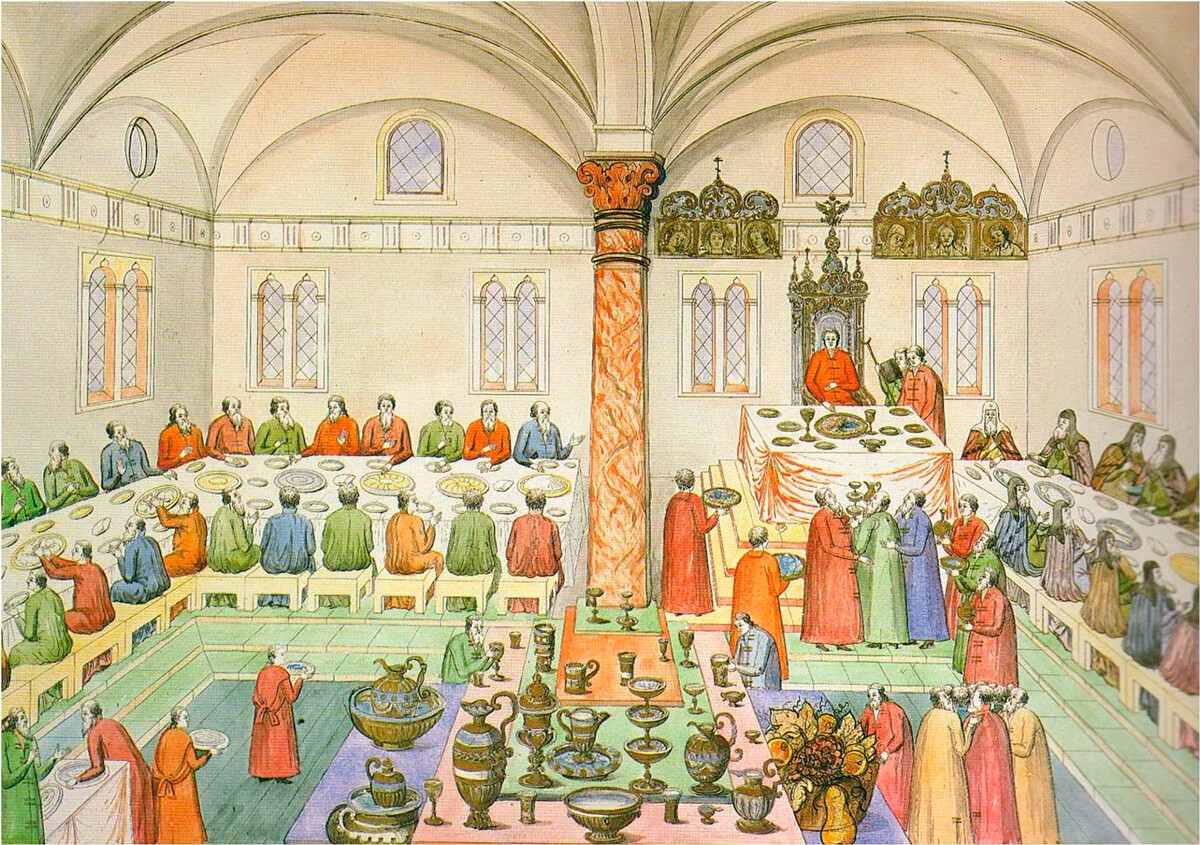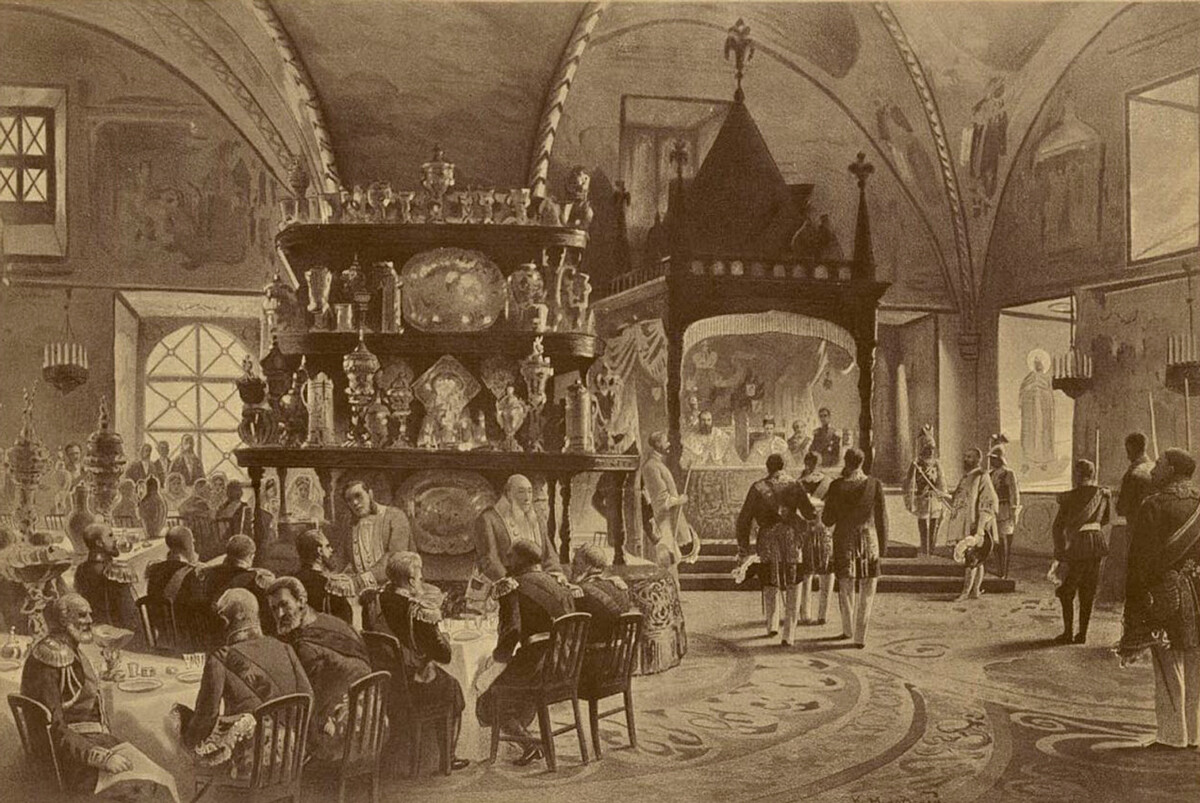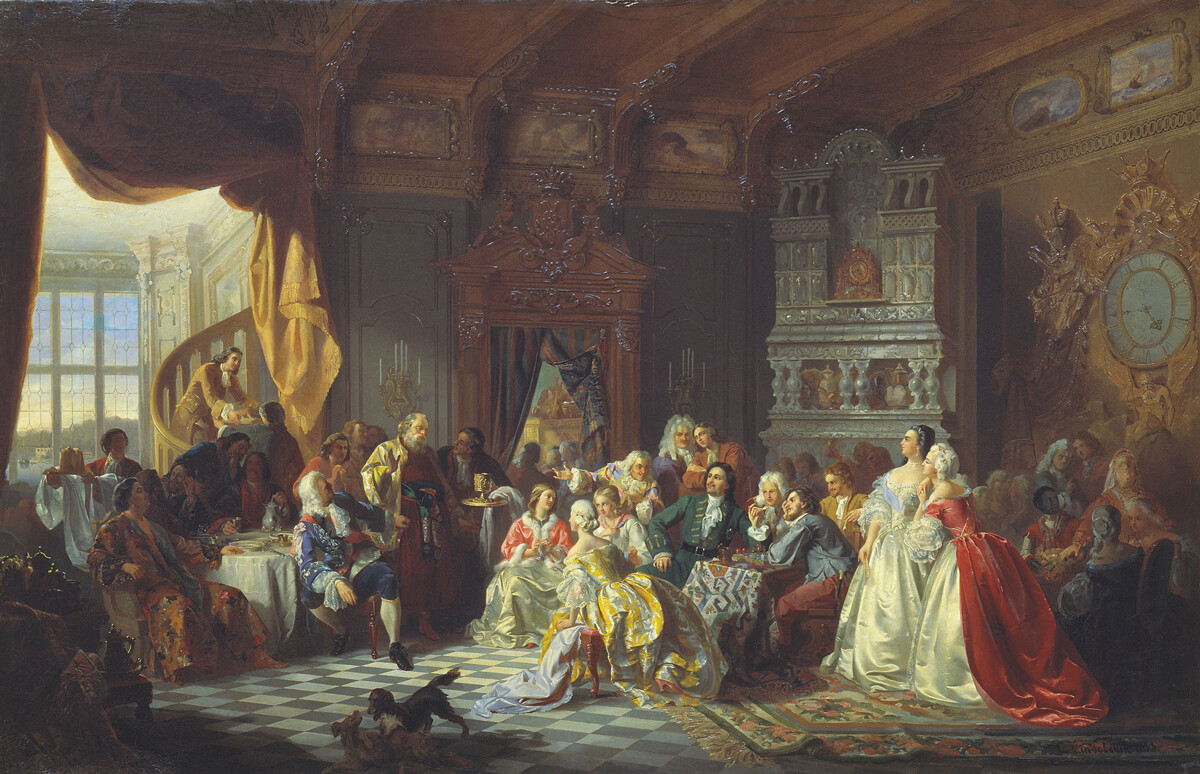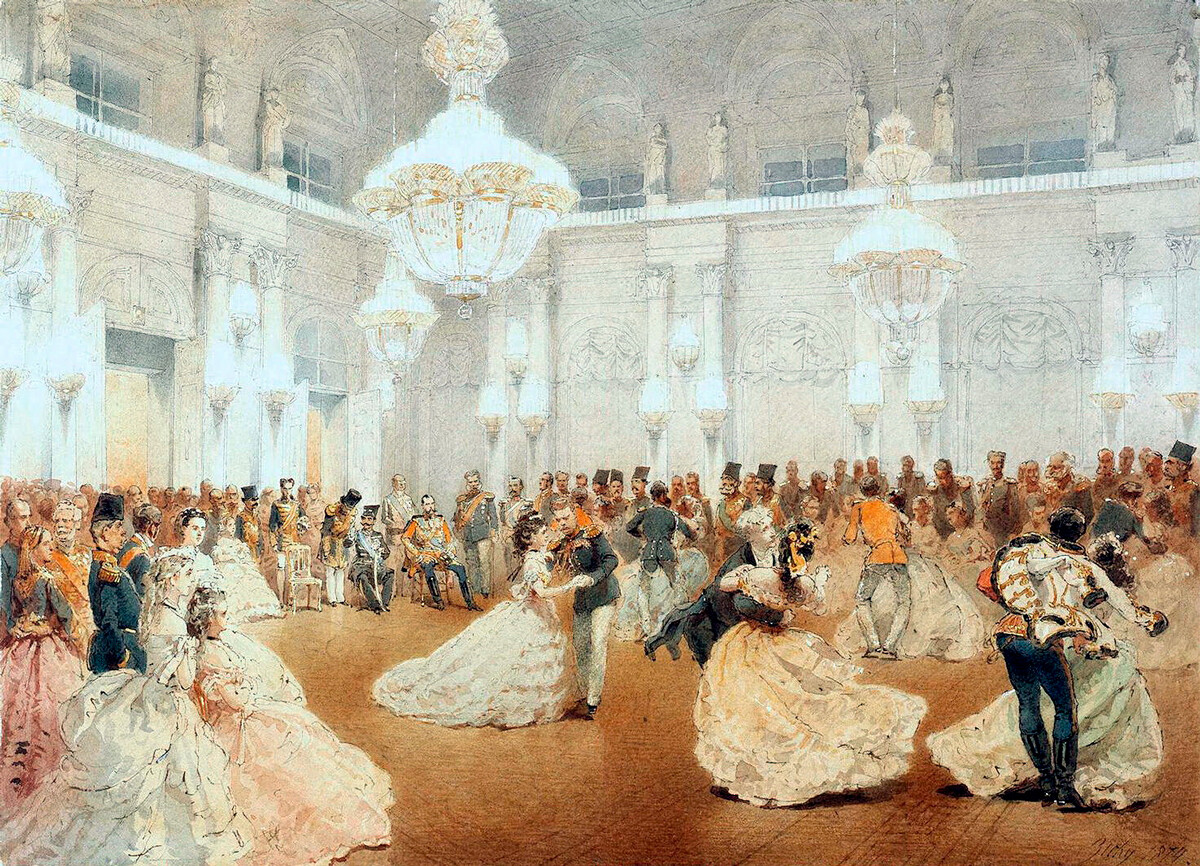
Under Alexei Mikhailovich’s reign, the main law of the state, the ‘Sobornoye Ulozheniye’ (‘Council Code’) of 1649, made “the birthday of the sovereign Tsar and Grand Duke Alexei Mikhailovich of all Russia and his noble Tsarina and Grand Duchess Maria Illinichna and their noble sons and daughters” a public holiday – courts and state institutions didn’t work and honor services were held in all churches across Russia.

The name-day feast of Mikhail Feodorovich at the Chamber of Facets, Moscow Kremlin's main ceremonial hall
Public domainBut at that time, they celebrated not a birthday, but a name day – the day of memory of the saint in whose honor the tsar or members of his family were named. A spiritual birth was considered more important than a physical one.
It all began with the first Romanov, Mikhail Feodorovich, who was born on July 12, which was also his “angel day”. Mikhail Fyodorovich was crowned on the eve of his name day, July 11, 1613, and, since then, the Romanov family has established the tradition of celebrating the tsar’s name day as a public holiday, which was made official by Mikhail Feodorovich’s son tsar Alexey.

A feast in the Chamber of Facets in 1883
Public domainLike any Christian, on his name day, the tsar attended a liturgy in the morning and took communion and then a feast was held. First, only the inner circle of the highest boyars were invited, with whom there was a “small table”, while a big dinner was held later in the presence of all higher officials of the state.
By tradition, the tsar would “hand out” name day pies. The tsar usually gave them to the closest dignitaries after the morning church service. If the tsarevich or tsarevna were too young, the pies were given on their behalf. Gifts were obligatory for the name day of the tsar. On this day, invitees carried gold crockery, embroidery, jewelry to the Kremlin, while the uninvited nobility and high merchants sent gifts to the Kremlin “in the name of the tsar”. The lack or absence of gifts had a very bad effect on the official and business career.
The name days of tsarinas were celebrated more modestly – the tsarina was congratulated in her Golden Chamber in the Women’s Half of the Palace by the highest boyars and the Patriarch and a solemn service was also held in church. The names of the tsarevitches and tsarevnas were celebrated according to the same model, but on an even smaller scale.

An evening with Peter the Great, 1858, Stanislav Khlebovsky
Public domainIt was a European custom to celebrate a birthday and on May 30, 1676, Tsar Feodor Alexeyevich, the eldest son of Alexei Mikhailovich and a young man of European upbringing, celebrated his first birthday at 15 years of age.
Peter the Great, Feodor’s younger brother, was already celebrating his birthday regularly and, each time, threw a big feast or even two. On his 38th birthday, which was celebrated in the house of Prince Menshikov in St. Petersburg, the tsar ordered all the guests to jump into the manor ditch and drink to his health. Many, including Prince Menshikov, caught a cold and fell ill. In 1718, the tsar’s 46th birthday was celebrated in the Summer Garden and, by night, many guests fell asleep right in the alleys, as there was heavy drinking, usual for Peter’s feasts.
On May 30, 1724, the tsar met his last birthday in the Golovinsky Garden at Lefortovo in Moscow. He stood for the service in the church, accepted greetings on his way out and then invited everyone to a solemn dinner in the garden. From six to eleven the guests and the tsar feasted in the open air and the celebration ended with fireworks over the Golovinsky pond. At midnight the guests went home.

A gala dinner at the Winter Palace, Mihály Zichy, 1873
Public domainIn the Imperial Era, birthdays and name days of tsars and members of their families were necessarily celebrated with balls. Name days of royal family members continued to be a public holiday – on each day, people would pray for the health of the noblemen in all churches across the empire.
Birthdays remained more of a family holiday. Nicholas I celebrated his birthday in a very modest way. His daughter Olga Nikolaevna wrote: “He did not allow to give him anything, but handkerchiefs and napkins.”
The name day of Nicholas, as a public holiday, was celebrated with “a solemn service, a ball and a dinner party in the evening in the White Hall of the Winter Palace, where about a thousand people usually gathered,” writes historian Leonid Vyskochkov.

A ball at the Winter Palace, Mihály Zichy, 1873
Public domainOften the names of emperors and empresses was accompanied by a solemn seeing off of the regiments on Palace Square. Moreover, name days were often “doubled”, because the namesakes had the same Saint’s Day. That is why Alexander II and his son the Grand Duke Alexander Alexandrovich, the future Emperor Alexander III, celebrated ‘Alexander’s Day’ especially solemnly and with double the number of guests.
Dear readers,
Our website and social media accounts are under threat of being restricted or banned, due to the current circumstances. So, to keep up with our latest content, simply do the following:
If using any of Russia Beyond's content, partly or in full, always provide an active hyperlink to the original material.
Subscribe
to our newsletter!
Get the week's best stories straight to your inbox